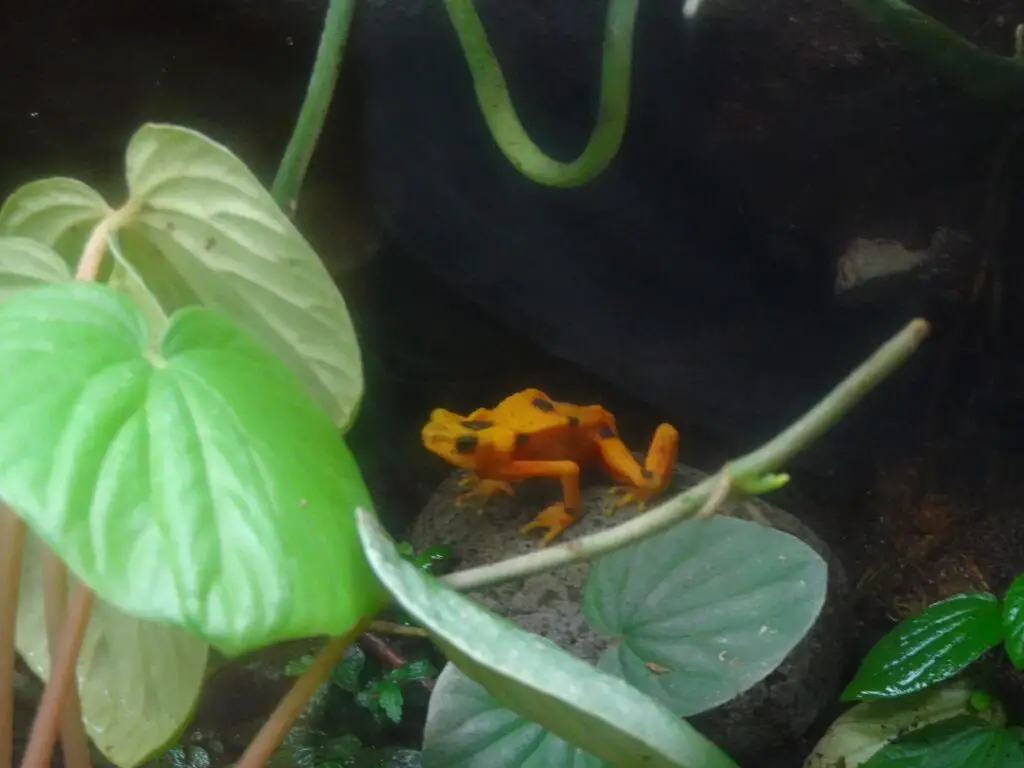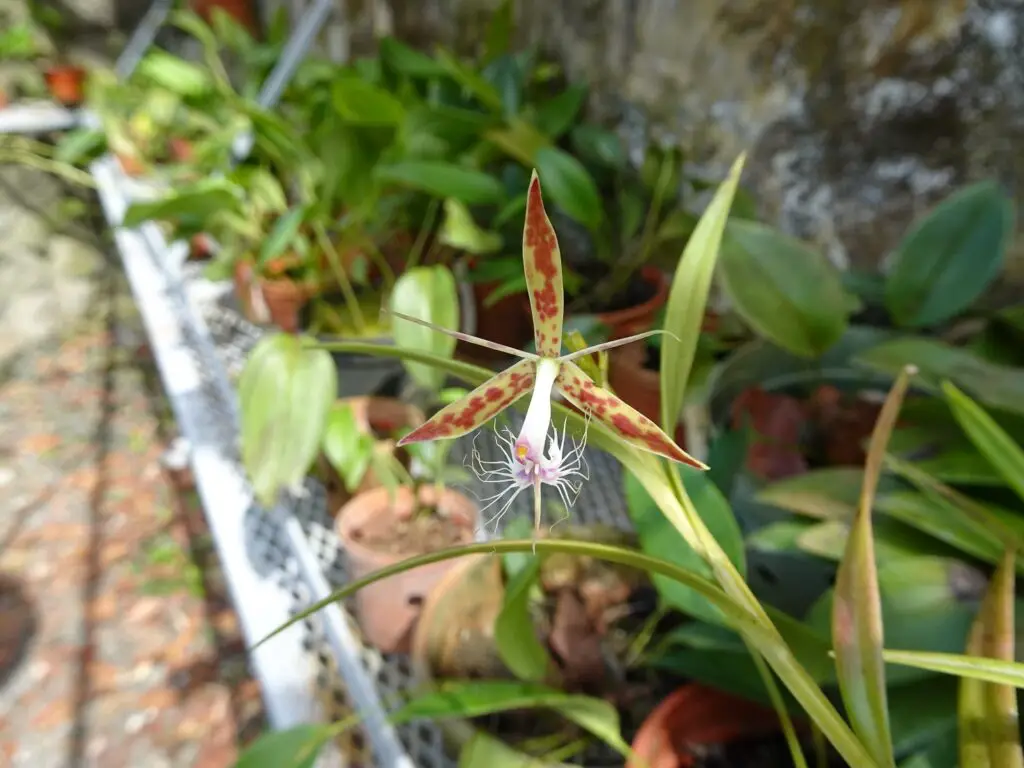Panama’s Anton Valley feels somewhat unreal. A spread-out village full of flowering bushes and little streams sitting slap-dash in the middle of a wide volcanic crater. We spent a couple of days in town and immediately fell in love with the place.
First of all, it’s a fantastic place to go hiking, as great views of the valley open up from almost every part of the crater rim. The other thing we loved about the valley is the environmental consciousness, as there are a variety of communal projects to keep the place as clean and traffic-free as possible.

Apart from that, there are several non-profit organizations dedicated to the protection of endangered plants and animals, which I highly recommend checking out. Here’s my suggestion for a 2-day-itinerary of the Valle de Antón.
This post may contain affiliate links, and I might earn a small commission at no additional cost to you. For more info, click here.
Guided Tours of El Valle de Antón
If you’re the adventurous type, there are several active outings available in the Valle de Antón, including rapelling off cliff faces or E-Bike Tours of the Valley. Have a look below for more options.
The Perfect 2-Day Valle de Antón Itinerary
Day 1
El Valle Visitor Centre
The Centro de Visitantes is a good place to start your first day in the valley, as it has plenty of suggestions for different hikes and places to check out in the vicinity. It also helps put the history and nature of the Valley into context.

There are several interactive displays about the geology and fauna of the place and a short promotional film worth checking out. Make sure to check out the recordings of different bird calls – they helped us spot a toucan later on our trip. The centre is open from 9am to 5pm.
Surrounding the visitor centre are several cafés and small restaurants, where you can grab a coffee and some breakfast before continuing your explorations of El Valle.
India Dormida Hike and Piedra Pintada
The climb up the India Dormida Ridge is one of the most popular hikes in the valley, but by picking a different route up than most people, we still managed to avoid the crowds. I suggest you do the same and start from the baseball pitch at the western end of town.

We took a taxi there (tell them to drop you at ‘cuadro la reforma’), but if you’re not in a rush, you can also walk to the trailhead. Once at the baseball diamond, simply follow the road West and turn right at the end, where a trail starts climbing up the mountain slope.
Once you’ve reached the top of the ridge, you’ll have amazing views over the entire caldera. When we were up here, it was super windy, so make sure to not get too close to the edge. Just follow the ridge in a northward direction, before descending at the northern end.
On the way down, you’ll come across several small waterfalls, as well as two rocks marked with prehistoric paintings. The upper one is a few meters off the trail (look for the signboard). The lower one, which is called Piedra Pintada is actually a tall rock shelter and can’t be missed.

If you prefer a guided hike of La India Dormida, private hiking tours are available, as well.
See Also: What to Know About the India Dormida Hike in Panama’s Valle de Antón
Chorro Macho
While it might not be as impressive as some of the waterfalls around Santa Fe or Boquete, Chorro Macho is still the tallest waterfall in the Valley. That said, especially in the dry season, it’s more of a trickle, and you can’t really get super close to the falls.
The best part of visiting Chorro Macho is the pretty stretch of forest surrounding the falls and the chance to take a dip in the natural swimming pool surrounded by beautiful jungle vegetation. Despite the proximity to the road, it’s also a good place for wildlife watching.

While hanging out at the pool, we spotted a Rivoli’s Hummingbird, Rufous Motmots and a White Hawk, not to mention tons of lizards, so keep your eyes peeled. The waterfall trail is open from 8am to 5pm.
Chorro Macho is off the La Mesa Road. You can either walk here for about 30 mins. from the northern India Dormida trailhead, or take a taxi for one or two dollars. On the way back, you’ll likely have to walk, as there are few taxis passing along the road.
Day 2
Panama Amphibian Rescue Centre
The non-profit conservation centre is dedicated to the protection of Panama’s rare Golden Frogs, who are currently thought to be extinct in the wild due to an infectious fungus. I highly recommend visiting their little office on the grounds of the Hotel Campestre at the northern edge of town.

For a small fee, one of the super-enthusiastic volunteers will point out the Golden Frogs and several other amphibians and reptiles in their terrariums. We certainly left knowing a lot more about frogs than coming in, although you definitely need to understand some Spanish.
The Hotel Campestre is also the starting point for a small nature trail leading to the valley’s famous ‘Square-trunk Trees’. The trail leads through a nice patch of tropical forest, but the slightly angular tree trunks themselves left us a little underwhelmed.
We, for our part, were wondering whether this was an emperors-new-close-type of situation, where everyone just agrees that the trees are totally square to not seem stupid 😂. Still, if you’re in the market for some obscure bragging rights, then the arboles cuadrados might be for you.
Ask the staff at the Amphibian Rescue Centre to unlock the gate to the trail for you.
Aprovaca Orchid Nursery
Another community-led project, the Orchid Nursery does exactly what you’d expect: Preserve and breed different species of Orchids. During our visit, we were led around by a volunteer guide, who pointed out all the different species currently in bloom.

Honestly, we would never have spotted most of them on our own. The different species only bloom for a short time, and some of the blossoms are absolutely tiny. Again, we were delighted with the care and attention that goes into the preservation of local nature.
The Orchid Nursery can be found at the eastern end of the village, to the south of the main highway.
Museo Victoriano Lorenzo
El Valle’s town museum details the history and nature of the valley. There are displays about the local geology, historical crafts and agriculture, as well as a large number of religious paintings, which have been collected from several churches in the area.
As an archaeologist, I might be a bit biased, but for me the most interesting part were the artefacts and displays on the funerary rites of the regional Pre-Columbian Gran Coclé-Culture. Another cool feature is the recreation of a traditional indigenous hut in the museum’s courtyard.

The museum can only be visited with a staff member, which is not a bad thing, as the signage is limited, anyway. The museum is open from Tuesday to Sunday from 10am to 8pm, which we found to be unusually late for a Panamanian Museum. Be sure to double-check the current times online.
We can also really recommend the fonda-style museum restaurant, which serves cheap and good local food and is a great place for lunch before or after visiting the museum.
Mariposario Butterfly Haven
To complete the trio of local conservation centres, visit the mariposario, where rare and beautiful butterflies are being bred and protected. While strolling through the flight house, you’ll be surrounded by hundreds of iridescent Blue Morphos, and other Central American butterflies.

There is also a small learning centre with a short film on the life cycle of butterflies and a room where you can observe the creatures in their different stages of life. The butterfly haven is off Calle La Planta, pretty much in the centre of the village.
Chorro Las Mozas
Las Mozas is a series of small cascades along the Rio Antón. The reason to come here is less for the modest waterfalls and more to take a swim in one of the many rocky pools surrounding them.

The farther along the river you go, the quieter it becomes and when we were there, we had the last accessible section of river completely to ourselves. While walking along the trail, make sure to check your surroundings for frogs and lizards, which we saw in spades here.
The waterfalls are off the main highway to the west of the village. You can either walk there from the centre or take a taxi.
Valle de Antón Itinerary Map
All the places mentioned in the itinerary can be found in this map.
Practicalities
How to Get to El Valle by Public Transport
El Valle is a bit off the Panamericana, so contrary to many other destinations in the country, you can’t just take any bus ploughing along the Highway to get there. If you’re starting from Panama City, there are frequent direct buses going to El Valle from the city’s Albrook Terminal (about 2 hours).

If you’re traveling eastbound, your best bet is to get off in Penonomé, which is located at the Panamericana and then change to an El Valle-bound minibus.
Accommodation in El Valle de Anton
We stayed at a wonderful AirBnB called Armadillo Shelter, which was located in a converted camper van and surrounded by a beautiful little garden. It’s one of the best AirBnBs I’ve ever stayed in, and I can highly recommend it.
Otherwise, if you’re on a tight budget, try Bodhi Hostel & Lounge, which has both dormitories and private rooms available. A well-rated midrange hotel option would be The Golden Frog Inn, while Casa Madre Tierra would be a more luxurious choice. Have a look at the map below for more options.
Where to Go Next
The Little-Visited Altos de Campana National Park


